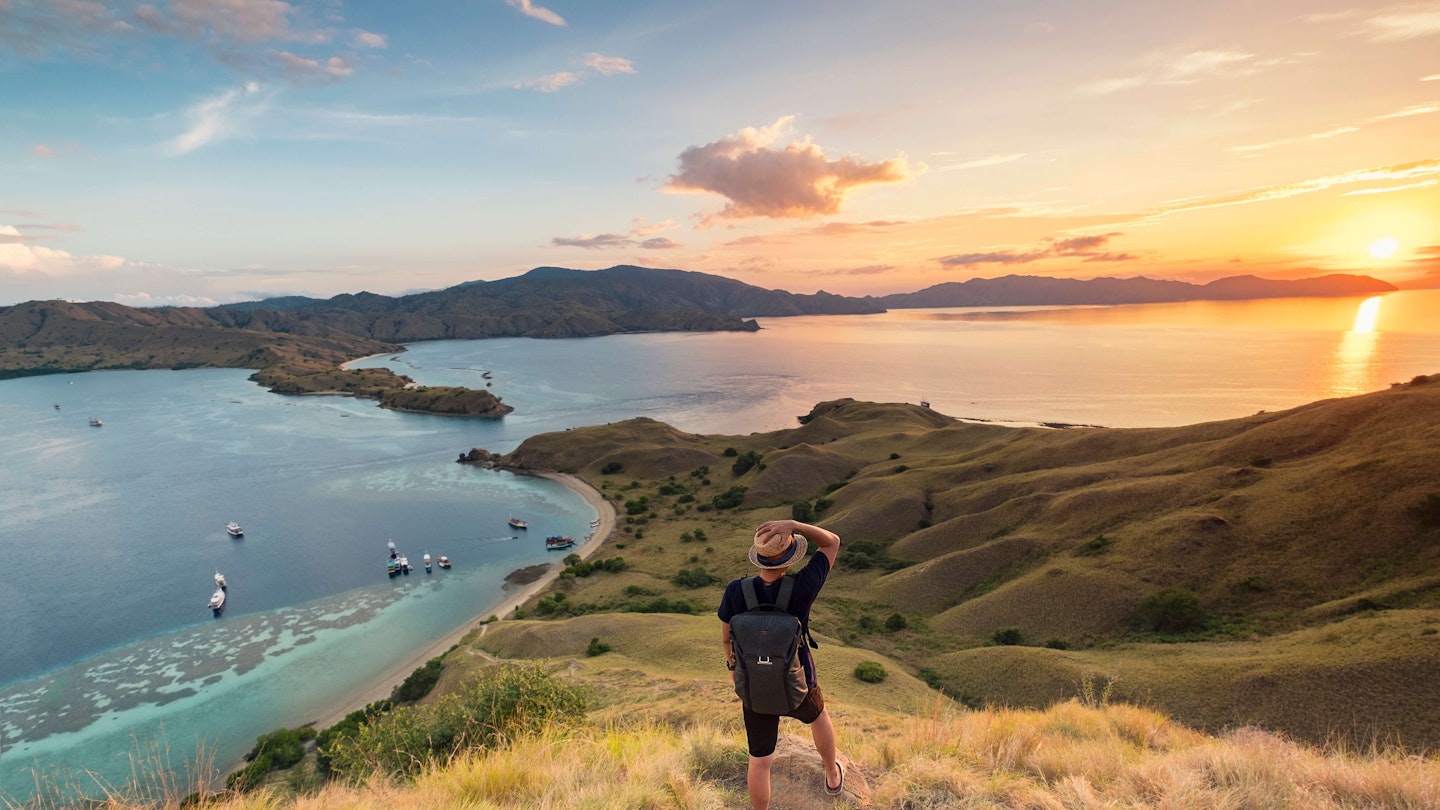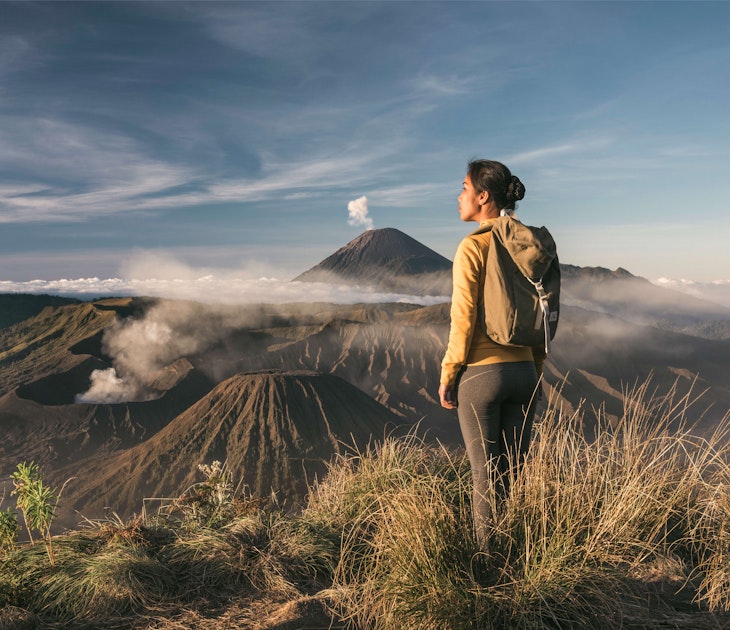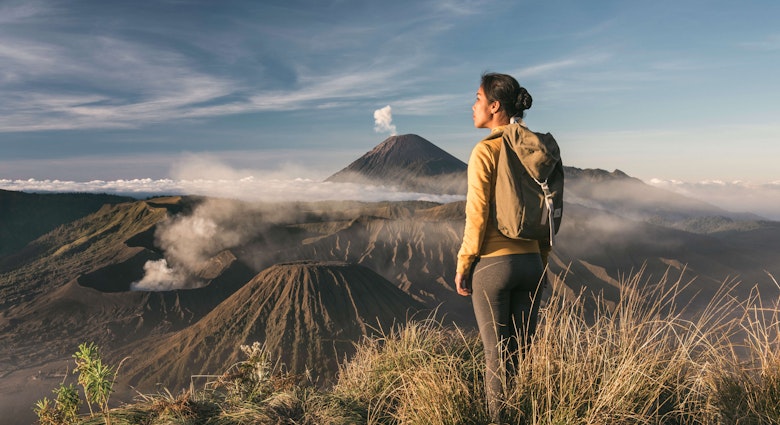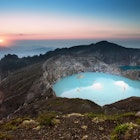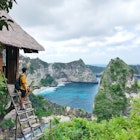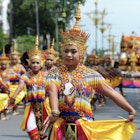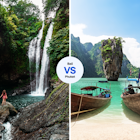In an archipelago that stretches more than 5000km (3107 miles), with 17,000-some islands to explore, Indonesia’s national parks offer close contact with orangutans, leopards, and chattering rhino hornbills – even Komodo dragons – and plenty of opportunity for thrilling adventures too.
There are a staggering 52 national parks in Indonesia, one for every week of the year. But if you don't have that long to spend, we’ve rounded up our favorites on Java, Kalimantan, Flores, Bali, Sumatra, and more. These are eight of the very best.

Bromo Tengger Semeru National Park, East Java
Bromo Tengger Semeru National Park rewards early birds. You'll need to leave your hotel at 3:30am to catch the sunrise from Mt Bromo, the island's most famous active volcano, but it’s worth it to see daybreak over the Tengger Massif range and the mighty Mt Semeru, 3676m (2.3 miles) high. After dawn, travelers continue on to the crater rim by 4WD, through a lunar-like landscape known as the sand sea.
Adventurous hikers can go on foot, an almost surreal crossing through the stark, sweeping plain. On the way up, you'll meet local Tengger horsemen, clad in traditional warm cloth to ward off the chill. Morning temperatures can be as low as 4°C (39°F), so make sure you bring warm gloves, a woolly hat, and a jacket, or hire a jacket there for around US$2. After crossing the sand sea by horseback, the final push is up 250 stairs to the Mt Bromo crater rim. From the edge, you can peek inside the bellows of an active volcano – a mass of bubbling liquid, sulfur, and smoke.
Gunung Palung National Park, West Kalimantan
In the Indonesian province of West Kalimantan, this remote 108,000-hectare (417-sq-mile) park is flanked by the Gunung Panti mountains, and it has a concentrated wildlife corridor where you're virtually guaranteed to spot orangutans in their wild habitat. Some 2500 Central Bornean orangutans live in the park, and you'll also find sun bears, white-handed gibbons, doe-eyed Horsfield's tarsiers, and hilariously overactive proboscis monkeys.
Like all national parks in Indonesia, you must hire a registered guide to visit. There are a variety of hiking trails, including a three-hour medium-grade rainforest trek that follows fruit trails and droppings on the forest floor to the orangutans' nesting spot, high in the trees. (To learn more about these primates who share 99% of our human DNA, check out the United Nations Great Ape Survival Project.)
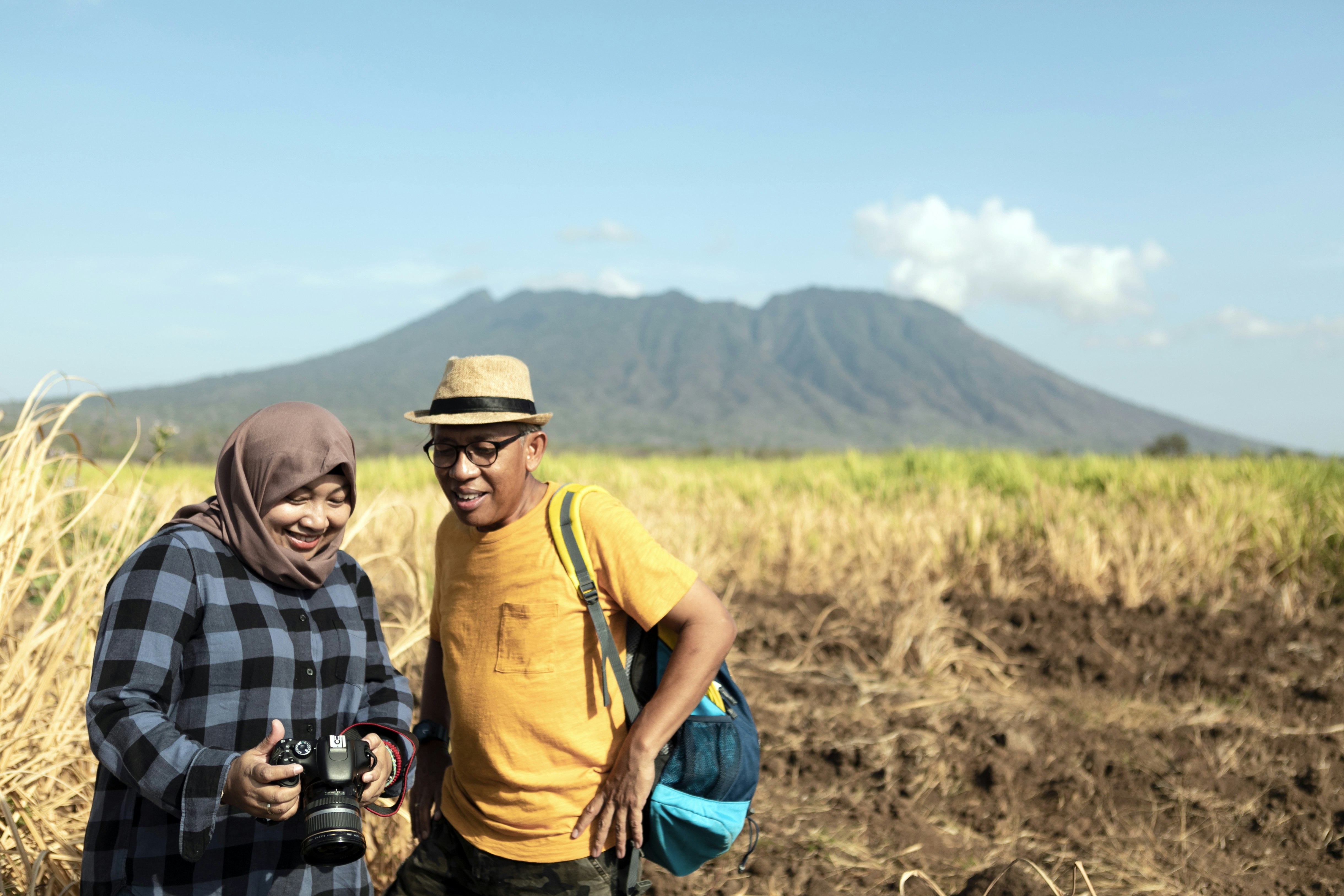
Baluran National Park, East Java
Known locally as Little Africa, Baluran National Park is a dramatic desert savannah replete with wildlife, covering some 23,713 hectares (92 sq miles) of land in East Java, plus a further 4155 hectares (16 sq miles) of oceanfront. You’re likely to meet a few water buffalo here, and flocks of preening wild peacocks; listen out too for the call of barking deer. There are 56 clouded leopards in the park, and the elusive protected cats come out at night to hunt. Spending an evening on the premises gives you the best chance of seeing them; park rangers can authorize an overnight by special arrangement.
Other species that are much easier to spot include leaf monkeys, endangered wild Asian dogs, Javanese warty pigs, monitor lizards, fruit bats, squirrels, and civets. Birders can find 155 species, including kingfishers, white-throated needletails, and bee-eaters. Bring your binoculars, a swimsuit and a picnic lunch – a special caged area is available for monkey-free dining at Bama Beach, the main strip.
West Bali National Park, Bali
If you love turquoise waters, secret beaches, hiking, and birdlife, head to the remote western tip of Bali. A designated natural park since 1917, West Bali packs a punch, with rainforest tracks, dry savanna lands, and montane forests hugging two extinct volcanoes. Hike the Tegal Blunder Trail, where you'll have a good chance of spying the endangered Bali starling, one of the park's major attractions. Keep an eye out for kingfishers, dollar birds, and barn swallows too, as well as wild cattle, Javan rusa, Indian muntjacs, large flying foxes, and the small, timid leopard cat.
For some of the best calm-water snorkeling in Bali, hire a local boat for the 30-minute ride to the nearby uninhabited island of Menjangan (Deer Island). Walk 40 minutes across the island, past the beautiful Hindu temple, Puri Gili Kencana, and end at the gigantic whitewashed Ganesha statue facing the sea.
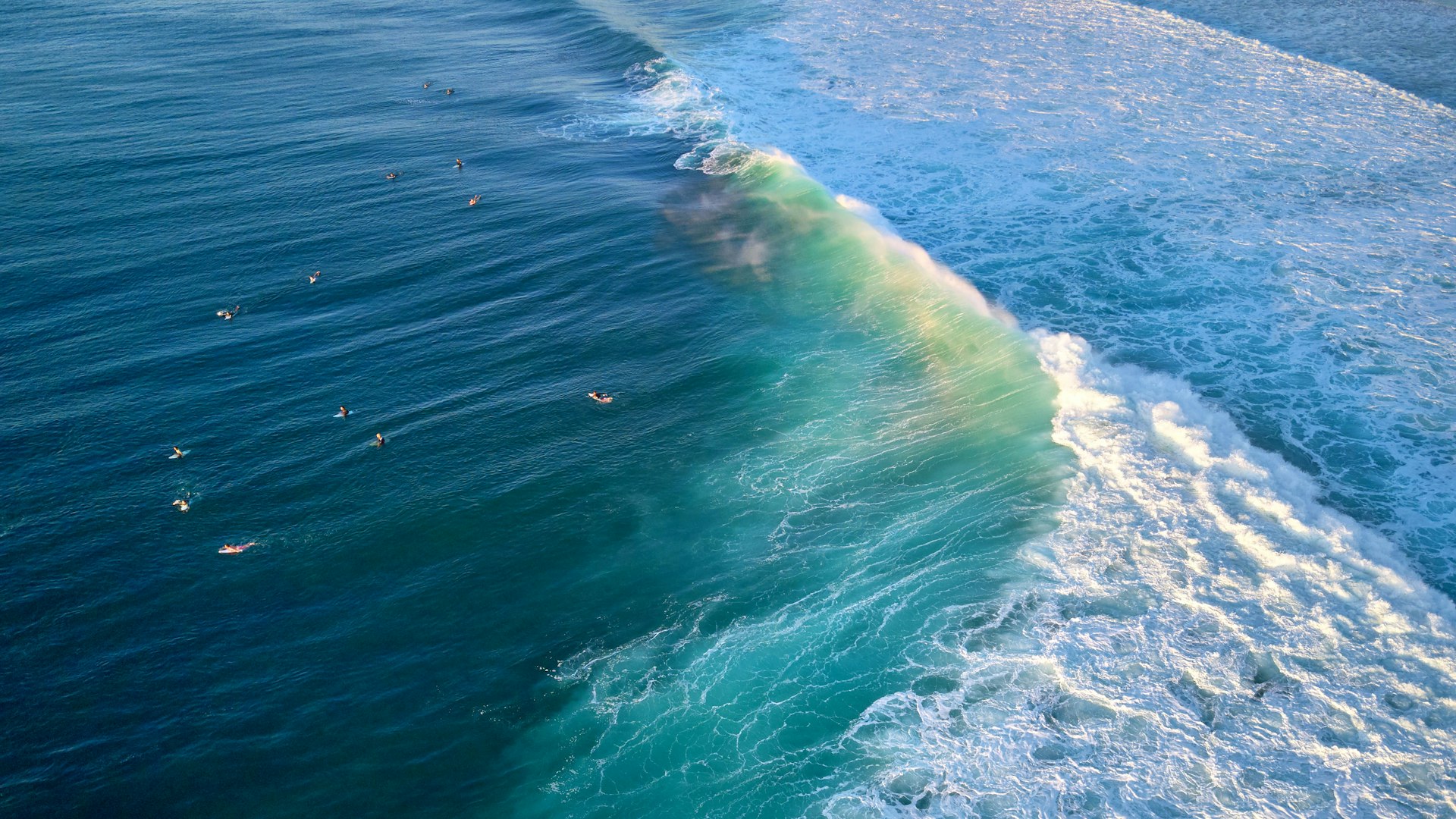
Alas Purwo National Park, East Java
The ancient forests of Alas Purwo speak of mystics living in caves, and you can hire a guide to hike to those caves, still used today. Visit Pura Luhur Giri Salaka, revered as one of Indonesia's most sacred Hindu temples; wave to the local fishers as your boat crosses the lake to somber dark mangroves; and release baby turtles back to the sea with a ranger from the turtle hatchery – magical experiences, all.
In the 80-hectare (198-acre) savannah of Alas Purwo National Park, watch for endangered banteng (wild cattle with curved horns) and protected species of Javan langur, dhole, and clouded leopards. Ask the ranger to tell you his leopard stories and show you his photos and videos.
Surfers will know the international surf break G-Land, off Blambangan Peninsula.
Spend the night in one of the park's new glamping tents, and after sunset, enjoy roaring beachfront bonfires and locally caught seafood barbecue. Gaze over the maze of colorful rock pools at low tide, housing fanciful iridescent critters. The staff diligently keeps the roaming monkeys at bay.
Komodo National Park, Lesser Sunda Islands
At the heart of the Indonesian archipelago is Komodo National Park, a top destination for hiking, swimming, and snorkeling comprising the volcanic islands of Rinca, Komodo, and Padar. Rinca has mangrove forests and lurking saltwater crocodiles, while Komodo is a top diving spot, home to almost 80% of the world's coral species and nearly 40% of all reef fish. Hikes to the peak of each island offer superb panoramic views.
The world's largest lizards are often spotted on their namesake island, but it's not uncommon to see a Komodo dragon loafing up the jetty to meet your boat in Rinca! Stick to the trail when you go exploring, and stay close to your guide – they're armed with a two-pronged stick, though attacks on people are very rare.
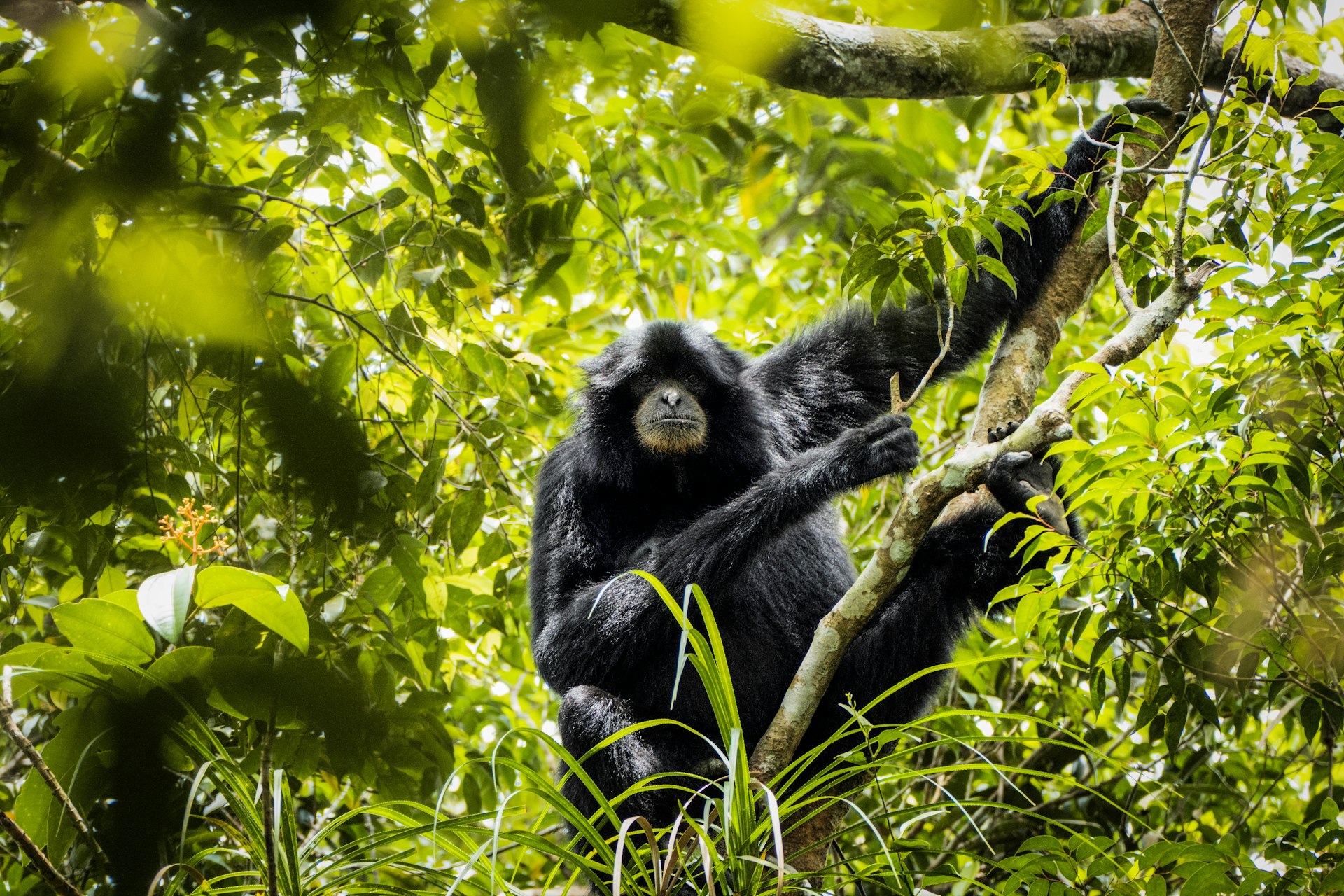
Gunung Leuser National Park, North Sumatra
Sprawling across two provinces, North Sumatra and Aceh, the 830,000-hectare (3205-sq-mile) Gunung Leuser National Park is home to the Indonesian big five: orangutans, tigers, elephants, rhinos, and sun bears.
Boasting the largest totally intact forest on the vast island of Sumatra, this is a jungle trekker's paradise, with an array of 89 endangered species living within the park. The Sumatran tiger is very shy, but talk to the women washing clothes on the banks of the river next to your jungle lodge, and they will happily point out tiger footprints.
Base yourself at the tucked-away village of Tangkahan, where the only way to your accommodation is by a high swing bridge. (Technically, arriving by an elephant is an option too, but both shoulder riding and sitting in howdahs, or elephant carriages, cause pain and spinal damage to the animals and are widely discouraged by animal welfare groups.)
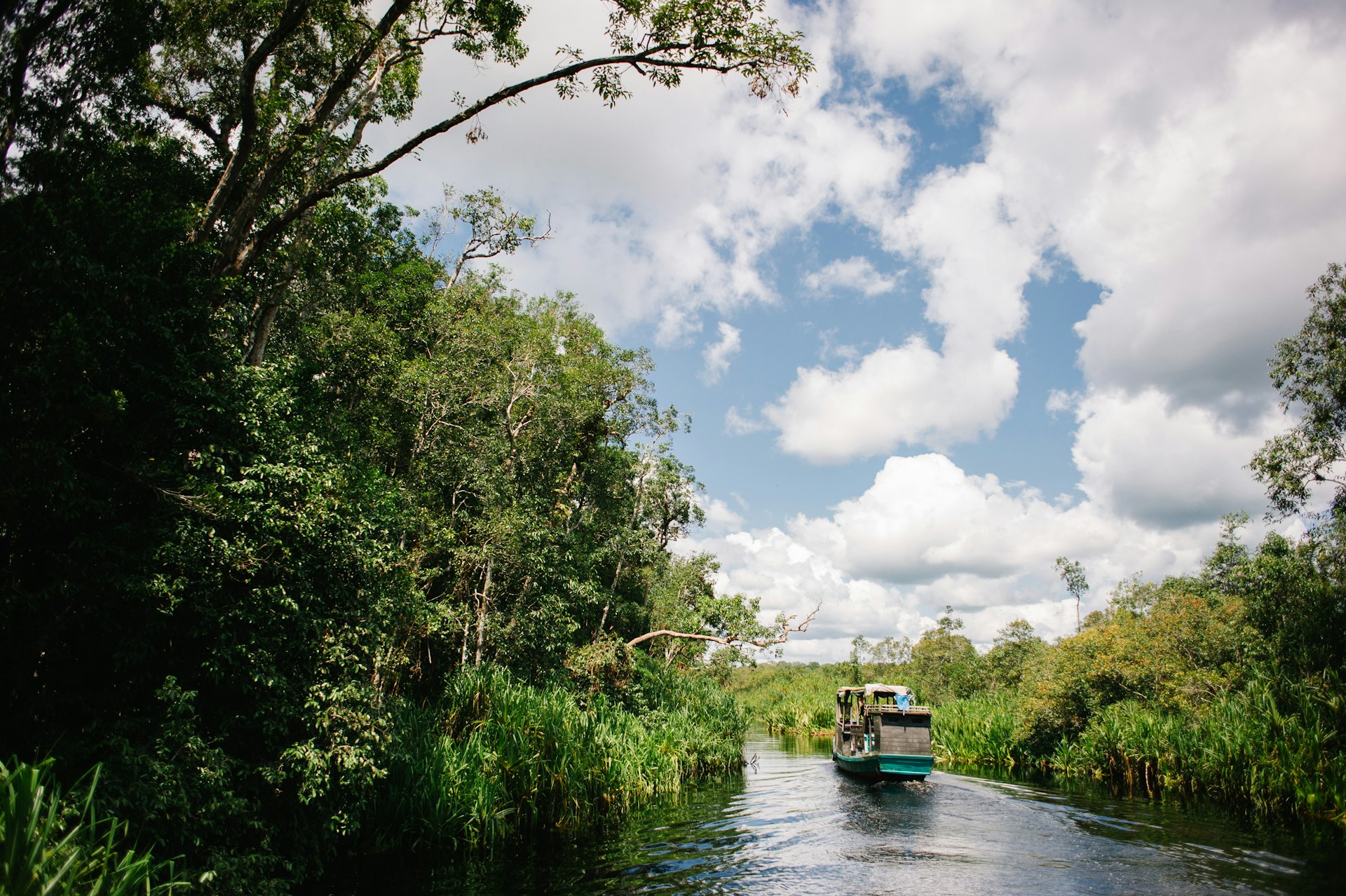
Tanjung Puting National Park, Central Kalimantan
In Central Kalimantan, Borneo’s Tanjung Puting National Park is all about the apes. These protected lands are renowned for their orangutan conservation, and with four research centers on the grounds, your chances of seeing the great ape in its natural habitat are 100%. The park is also home to proboscis monkeys and their six-inch noses.
For the best experience, take klotok (traditional houseboat) up the Sekonyer River to Camp Leakey, a rehabilitation center founded in 1971 to care for the region's endemic primates. Stretch out on the boat's wooden deck as you cruise through forests of peat and heath, coastal beech, and mangroves – it's a three-day trip, puttering along at 3km/h (1.9mph), with hornbills swooping across the sky and orangutans crashing through the treetops.
You might also like:
Top 13 must-see natural wonders in Indonesia
The 11 best things to do in Indonesia, including orangutans, otherworldly architecture and oh-my-word views
How to get around Indonesia (with less hassle)

